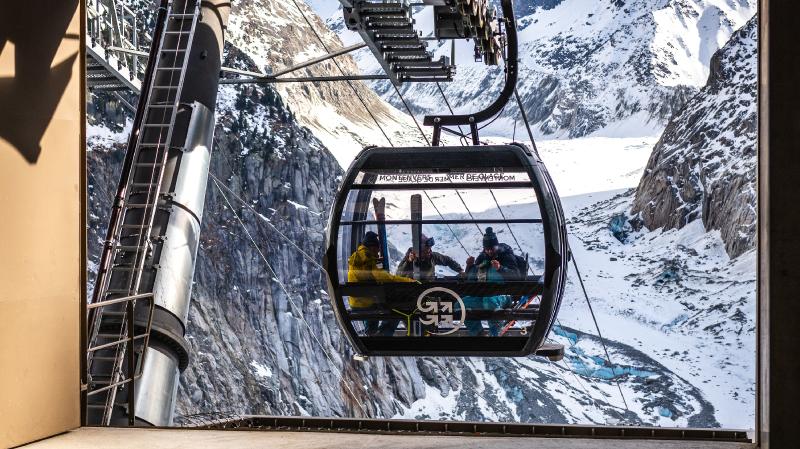Climate Change and 'Last-Chance Tourism'
By: Desiree Ibekwe (The New York Times)
Just ignore the fact that rushing to see it before it's gone only hastens the loss. But, hey, you got yours and that's what really matters. Those who die with the most toys win. That's been the priority for all manner of American activism.

A lot of climate discussion revolves around time. Lines rise across charts predicting the next century. Scientists set deadlines for the coming decades. Each month seems to bring news of a new heat record. The sense that time is running out can be heady.
As the Earth warms, natural wonders — coral reefs, glaciers, archipelagos — are at risk of damage and disappearance. This has motivated some travelers to engage in "last-chance tourism," visiting places threatened by climate change before it's too late.
"For thousands of years, humans have raced to be the first to scale a peak, cross a frontier, or document a new species or landscape," Paige McClanahan writes in a piece for The Times. "Now, in some cases, we're racing to be the last."
A vanishing glacier
One such destination is the Mer de Glace, the largest glacier in the French Alps, where thousands of people go each year to ski. (Early tourists included Mary Shelley and Mark Twain.)
The glacier, like many others, is melting rapidly. A new, higher lift opened recently to stay closer to the retreating ice. And a study published in the journal Science last year found that around half of the world’s glaciers will have melted by the end of this century, even if nations stick to the goals of the Paris climate agreement.
“For someone who doesn’t know how it used to be, it’s a beautiful scene,” a visitor to the glacier told Paige. “But when you know the difference, it really is sad.”
Pros and cons
There is some evidence that visiting an ecosystem threatened by climate change could lead people to become more aware of their impact on the environment.
In a 2020 survey conducted by researchers at the Mer de Glace, 80 percent of visitors said that they would try to learn more about how to protect the environment, and 77 percent said they would reduce their water and energy consumption.
Some tourist spots have leaned into education. In Peru, officials renamed a trek to the Pastoruri glacier “La Ruta del Cambio Climático,” or “The Route of Climate Change.” And at the Mer de Glace, an exhibit about climate change — called the Glaciorium — is set to open later this year.
There are some, however, who question of the value of last-chance tourism. Visiting fragile environments can do more harm than good.
Some people travel to Antarctica because they fear it is being destroyed. But, as Sara Clemence highlighted in a piece in The Atlantic last year, travel there requires a lot of fuel, while visitors can introduce disease and damage wildlife. And research by Karla Boluk, an academic from the University of Waterloo, found that a majority of last-chance tourists to two sites in Canada were unwilling to pay extra to offset the carbon footprint of their trip.
“There’s an ethical paradox of last-chance tourism,” Boluk told The Times, “and it involves the moral question of whether travelers acknowledge and respond to the harm they promote.”










Going, going, too late you missed it. And you are supposed to feel deprived.
When I went to the Mer de Glace about 12 years ago the cable car, that used to take you to the glacier, ended and you still had to go down about 400 stairs to get there. This article says there's a new cable car now making it more accessible.
The biggest public relations failure in history continues as the climate change crowd's tactic of using fear of the future by creating scary scenarios of imminent catastrophes. It's all for naught. Climate change is of low concern to the vast majority of the world's population.
We are in an interglacial warming period and no one knows how long it will continue. By what amount the global temperatures of both the atmosphere and the oceans have risen and to what extent human activities are responsible for it is still unclear. The oceans are rising only about a tenth of an inch a year, so there is ample time to plan for adaptive measures that will protect coastal cities and areas.
The use of fossil fuels is not going away anytime soon, the global economy and standard of living depend upon it. EVs are only a tiny fraction of an adaptive measure, wind and solar only slightly more. There needs to be much more research into the development of nuclear, hydrogen, and fusion as alternative power sources
Oh really?
We are in an interglacial warming period and no one knows how long it will continue.
Well this one is simple, it will continue up to and into the beginning of the next ice age.
The oceans are rising only about a tenth of an inch a year, so there is ample time to plan for adaptive measures that will protect coastal cities and areas.
This will accelerate, we are approaching or are already in the cascading part where Greenland will lose much of it's ice sheet and some of the Antarctic glaciers will quicken their pace as the rising sea levels lessen the back pressure.
The use of fossil fuels is not going away anytime soon, the global economy and standard of living depend upon it. EVs are only a tiny fraction of an adaptive measure, wind and solar only slightly more. There needs to be much more research into the development of nuclear, hydrogen, and fusion as alternative power sources
When you look at the history behind ice ages, everything we are seeing throws the assumption that CO2 is the cause of the warming out the window, which allows us the time needed to advance economically into differing energy sources without being stupid about it.
Very sad, I skied Mont Blanc off-piste twice in the last century. the run from the top to Chamonix. The Vallee Blanche route was over 12 miles long. No sky patrol, no marked runs, just crevices, the Mer de Glace and that iconic mountain view. I went with 6 other couples and a guide. A wonderful way to spend a day.
It's inevitable, in order to get the higher sea levels to bring on the next ice age, glaciers and ice sheets will melt into the oceans, which has been happening since the last ice age.